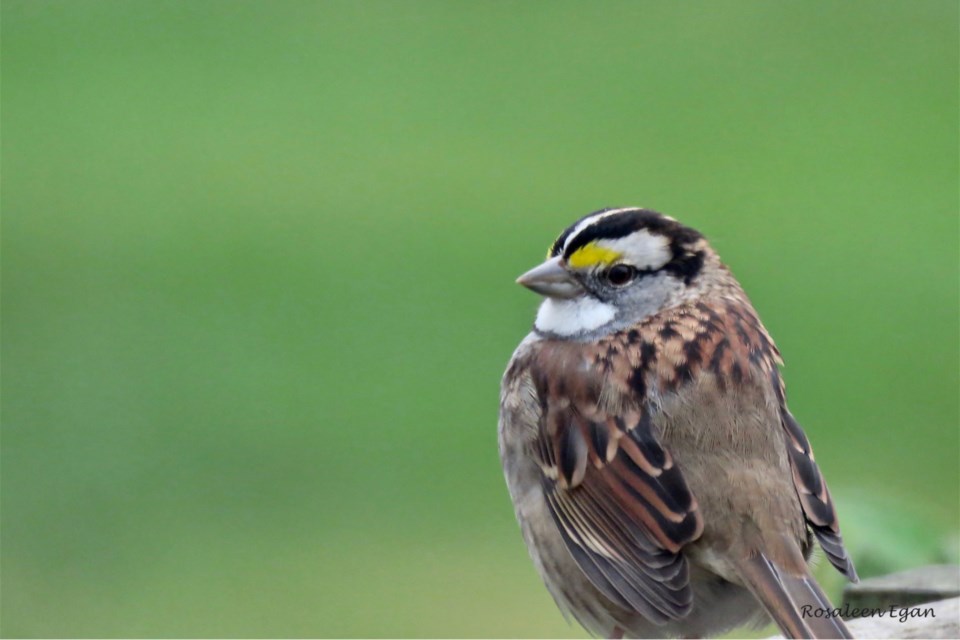There are over 20 species of sparrows in Ontario. Some come and go in certain areas; some are year-round. There are also sub-species of those sparrows.
This past week or so, I had a few unusual or intermittent visitors around the house. Yes, that does include the ever-present house sparrows. It also includes song sparrows, a chipping sparrow, white-crowned sparrows and a white-throated sparrow. Dark-eyed juncos are back for the winter as well. They are a type of sparrow.
Curiously, the white-throated sparrow and dark-eyed juncos sometimes mate, creating a hybrid. All About Birds says, “The resulting offspring look like grayish, dully marked white-throated sparrows with white outer tail feathers.”
This adds to the confusing identification of sparrows. Although the plumage of male and female white-throated sparrows are similar, these sparrows come with either white or tan head stripes. The difference is not just physical.
Scientists have observed differences in behaviour in the two morphs. Birds Of The World says, “White-striped (WS) males sing more, are more aggressive and more likely to engage in extra-pair copulation than their tan-striped (TS) counterparts. TS birds of both sexes provide more parental care than WS birds.”
They also discovered that white-throated sparrows always breed with the opposite colour morph, either tan-striped or white-striped heads.
Sometimes, it’s hard to spot irregular visitors among the almost always present house sparrows. It can be easy to dismiss a gathering of brown birds. The white-throated sparrow faced away from me as it sat with a house sparrow. This is only the second time I’ve seen a white-throated sparrow here.
I could distinguish the white-throated sparrow from another recent visitor, the white-crowned sparrow, initially by its bulk. It seemed stockier than the white-crowned sparrow. When it turned its head, I could see the yellow spot between its bill and eye and its patch of white on its throat. The White-crowned Sparrow has neither of these.
Going from white-throated to white-crowned sparrow as I write this takes some concentration and perhaps patience on the part of the reader. For this, I apologize. I also see no other way to present the information.
At this time of year, white-throated sparrows usually hang out in flocks. This one seemed to be on its own.
These sparrows are common in Canada, the northeastern U.S., and the northern Midwest. They breed near or on the ground. “These nests may be in roots of an upturned tree, brush piles, in shrubs or ferns, or as high as 10 feet up in a coniferous tree."
White-crowned sparrows sing a song that has been written as “Oh-sweet-Canada-Canada."
“During migration and winter, you’ll find white-throated sparrows along edges of woodlots, hedgerows, thickets, weedy fields, suburbs, backyards, and city parks,” says All About Birds.
It is a short distant migrant, with breeding and winter ranges overlapping. According to Birds Of The World, “Spring migrants arrive when snow melt exposes portions of the forest floor; latest departures in fall are prior to first permanent snowfall. In winter, individuals seek areas with minimal snow cover (e.g. U.S.), facilitating ground foraging.”
I expect my visiting white-throated sparrow will be heading a little further south before too long. I wish it well on its journey.
I share experiences of bird visitors to this property with readers every couple of weeks. Until next time, keep your eye on the sky, and look for birds that may come by.
Rosaleen Egan is a freelance journalist, a storyteller, and a playwright. She blogs on her website rosiewrites.com.



